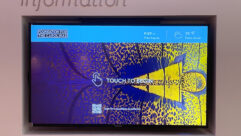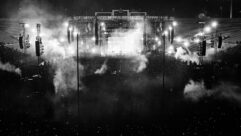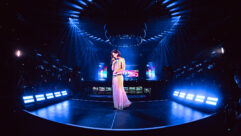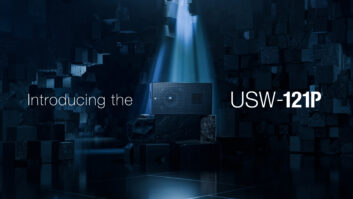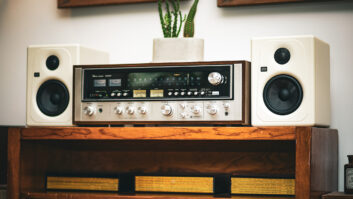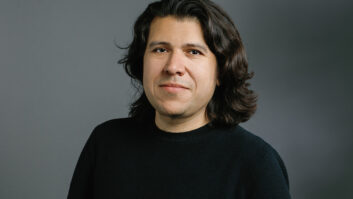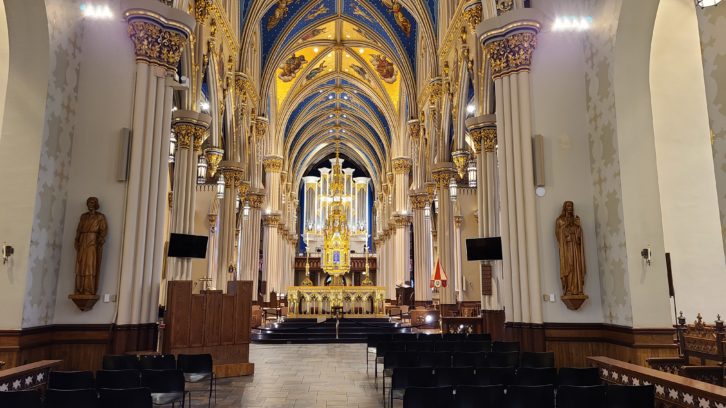
For more than 140 years, the Basilica of the Sacred Heart — which serves as the mother church of the Congregation of Holy Cross in the United States — has served the community, student, faculty and staff of the University of Notre Dame. It’s given the community a place to gather, worship, and experience a truly powerful, immersive space. The original presence of the Roman Catholic Church at this location began in a log cabin in the 1840s, which was replaced with the first church structure on the site later that same decade. The University’s congregation quickly outgrew the small church and, in the spring of 1870, construction started on the now-historic structure we know today.
Over its lifetime, the Basilica has undergone three major renovations aimed at ensuring the historic and religious structure continues to serve its community, as well as pilgrims, and more than 50,000 visitors each year. The Gothic Revival-style church is built in the traditional shape of a Latin cross, measuring 275 feet long and 114 feet wide. In 1992, the church was designated as a minor Basilica, and it is graced with 44 large stained-glass windows, 114 life-sized images of saints and 106 smaller scenes.
Part of delivering the communal experience is providing an audio solution that heightens the environment without detracting from the majesty of the space — and the Basilica of the Sacred Heart needed a new solution.
The Basilica of Notre Dame received its first upgrade in 2002 with its move into broadcast, with the first Mass being broadcast in 2016. That same year, cameras were upgraded to high-definition solutions with an eye on audio improvements to be addressed at a later time.
With the upgraded cameras, Notre Dame Studios — the broadcast team that manages digital streaming for both Notre Dame University and the Basilica — relied on the original house audio, which was designed to simply feed the Basilica’s audio into the broadcast studio through a mixer located within the Basilica itself.
Given the nature of the space and the materials used within the historic structure, the reverb was high and audio clarity was extremely poor, meaning the Basilica needed to improve the audio system used that was transmitting to the broadcast center. This meant the audio upgrade expanded to a major overhaul of the sound system to ensure that, for the first time, the Basilica would have audio that was clear and intelligible, regardless of the size of service. This also included the capability to capture the choir located in the separate loft section
DSH Audio Vision was brought in as the project design consultant to define and upgrade the sound system of the Basilica, enabling Notre Dame Studios to stream services of varying sizes and ensuring the experience in-person and virtually was enjoyable while delivering the message of fellowship. The DSH-specified Bose Professional system allowed the Notre Dame Studios team to mix an appropriate audio experience for the broadcast versus what was live in the Basilica.
In a reverberant space like the Basilica, the Bose MSA12X self-powered digital beamsteering array loudspeakers created a solution worthy of this 140-year-old location, delivering the audio quality and clarity.
The MSA12X loudspeakers require no external amplifiers, and the combinations of single speakers, double stacks, and triple stacks were used to deliver the audio performance the Basilica was seeking, regardless of the zone being used within the space.
The main nave employs a triple stack of the MSA12X loudspeakers, the transepts have single stacks aimed backward, there are double stacks aimed toward the back of the sanctuary, and the Lady Chapel uses single stacks.
Given the complexity of the space and the variety of services held throughout the different locations within the Basilica, the sound system would need to serve the different zones efficiently no matter where congregants were.
Originally, the team was concerned about the pillars in the Basilica and the acoustic shadows they caused. Knowing these areas needed to be addressed, the Bose solution incorporated the pillars’ unique properties. It was vital the Basilica’s historic interior and atmosphere was preserved and not be marred by excessively visible audio equipment. Through the use of the Bose Modeler Sound System software, DSH Audio Vision ensured the Bose Professional audio solution was a customized fit.
Now, the Basilica offers both in-person attendees and virtual worshipers the same moving experience with audio and video. Regardless of where congregants sit, even if it’s in the Lady Chapel, the choir sounds as though they are singing right next to the individual — even though they are about 200 feet away.
Mass and other ceremonies now offer excellent articulation and a consistent, impactful musical experience despite common challenges outfitting liturgical structures. No longer are the building’s shape, architecture, or interior materials insurmountable obstacles.
Originally the university’s goal was to improve audio quality to broadcast center. The resulting solution provided an audio experience that became clear and enjoyable within the space itself.


